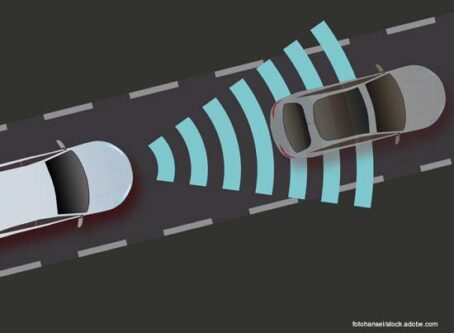Speed limiters, AEBs sought by Truck Safety Coalition
In a letter to Transportation Secretary Pete Buttigieg, the Truck Safety Coalition called for mandated speed limiters and automatic emergency brakes on all commercial motor vehicles.
“For years, the Department of Transportation has delayed and deferred critical regulatory actions bowing to the sustained opposition of special trucking interests that compromise the safety of all trucks including those transporting hazardous materials,” the Truck Safety Coalition wrote in the letter sent on Tuesday, March 14.
The letter was co-signed by such organizations as Citizens for Reliable and Safe Highways, Parents Against Tired Truckers, Advocates for Highway and Auto Safety and the International Brotherhood of Teamsters.
The groups used the recent attention on the railroad spill in East Palestine, Ohio to ask Buttigieg to take measures to prevent truck crashes involving hazardous materials.
“Shipping hazardous materials by truck presents a significant and lethal risk to the American public,” the Truck Safety Coalition wrote. “Since 2014, more than 18,000 highway incidents each year, on average, have involved hazardous materials. Over the years from 1990 to 2021, there were 16 times more hazardous material-related fatalities in truck transportation compared to rail.”
The coalition asked Buttigieg to issue the following measures in the trucking industry:
- Mandated automatic emergency braking
- Mandated speed limiters
- Reformed hours of service and required sleep apnea screening
- Mandated knowledge exam for new motor carriers
Many of the coalition’s proposals face significant opposition in the trucking industry.
Automatic emergency braking
The coalition asked the Department of Transportation “to move expeditiously to issue a comprehensive automatic emergency braking standard that mandates this technology on all new trucks.”
The Federal Motor Carrier Safety Administration and National Highway Traffic Safety Administration are soon expected to issue a joint proposal regarding the braking systems on heavy-duty trucks.
According to a recently released regulatory agenda, the two agencies plan to publish the notice of proposed rulemaking in March. Previously, the notice had been expected to be unveiled in January.
The agencies will seek comments on a proposal to require and/or standardize equipment performance for automatic emergency braking systems on heavy trucks.
The rulemaking is expected to propose performance standards and motor carrier maintenance requirements for automatic emergency brakes on heavy trucks and accompanying test procedures for measuring performance.
FMCSA and NHTSA are issuing the automatic emergency braking rulemaking as required by the 2021 infrastructure law.
The Owner-Operator Independent Drivers Association continues to oppose any attempts to require automatic braking systems on heavy-duty trucks.
OOIDA says the technology should be perfected before any sort of mandate is put in place.
“If we’re going to foist this mandate on the entire industry, we better make sure this technology has been perfected or as close to perfection as technologically possible,” said Collin Long, OOIDA’s director of government affairs. “And we know from our drivers that it’s not there yet.”
Speed limiters
Saying that “speed kills,” the Truck Safety Coalition wants trucks to be limited to a maximum speed of 60 mph.
Last year, FMCSA issued an advance notice of proposed rulemaking that considers requiring commercial motor vehicles with a gross vehicle weight of 26,001 pounds or more to be equipped with speed-limiting devices. A top speed was not determined in the advance notice, but previous proposals floated the possibilities of 60, 65 and 68 miles per hour.
According to the Regulations.gov website, about 15,600 comments were submitted to the FMCSA in response to the advance notice. The turnout was dramatically larger than most FMCSA notices, and an overwhelming majority of the comments made the agency aware that truckers plan to fight it every step of the way.
Opponents point to the large speed differentials that would be created. Limiting trucks to 60 mph would force trucks to go 25-30 mph slower than vehicles on the same road in some instances.
“Small-business truck drivers strongly object to any speed limiter mandate for several other reasons based on their own experiences,” OOIDA wrote in its formal comments to the agency. “Speed limiters take control of the truck away from drivers, denying them the ability to avoid accidents and unsafe road/traffic conditions. Speed limiters increase driver stress and make drivers more fatigued because they must operate longer hours in order to complete the work expected of them, and they must also operate at the maximum allowed speed for more of those hours.”
FMCSA is expected to issue a notice of proposed rulemaking regarding speed limiters later this year.
Hours of service and sleep apnea
In 2018, OOIDA petitioned FMCSA for more flexibility in the hours-of-service regulations. Some of the aspects of OOIDA’s petition were included in a rule change that took effect in September 2020.
Now, the Truck Safety Coalition is asking for that flexibility to be taken back.
“We urge you to restore the 2011 rule immediately and require a 30-minute rest break after eight hours that does not allow nondriving work,” the coalition wrote. “Additionally, DOT should reinstitute the rulemaking requiring screening and treatment of safety sensitive personnel for obstructive sleep apnea, something DOT already requires of air pilots.”
In contrast, OOIDA believes granting professional truck drivers even more flexibility will lead to greater safety outcomes.
“As the Federal Motor Carrier Safety Administration is well aware, truckers face delays and challenges beyond their control every day,” OOIDA wrote to the agency. “Whether it be inclement weather, traffic accidents or excessive detention time, drivers face obstacles that make it difficult or nearly impossible to safely complete their work. All of these drivers, not just those in a single industry, want regulations that recognize these challenges while still ensuring safety.”
OOIDA also has been opposed to required testing for sleep apnea.
Knowledge exam
The coalition wants new motor carriers to demonstrate an understanding of the federal safety standards before being able to participate in interstate commerce.
“In addition, entry-level drivers who are learning to properly transport hazardous materials are not required to accumulate a minimum number of behind-the-wheel training hours,” the safety groups wrote. “This is unacceptable.”
OOIDA has long advocated for the implementation of an entry-level driver training rule and has pushed for a minimum number of behind-the-wheel hours to be included.
The Association says that a good driver training program is a way to improve highway safety and driver retention.
During a driver retention roundtable discussion in 2021, OOIDA President Todd Spencer described the status quo as “absolute lunacy.”
“The driver training stuff … Jeez, we have so far to go in those areas,” Spencer said. “It is absolute lunacy that we have big carriers today that’ll have a trainer and a trainee in the truck, and the trainer may have no more than six months of experience. And they go down the road, and that passes as acceptable.” LL









